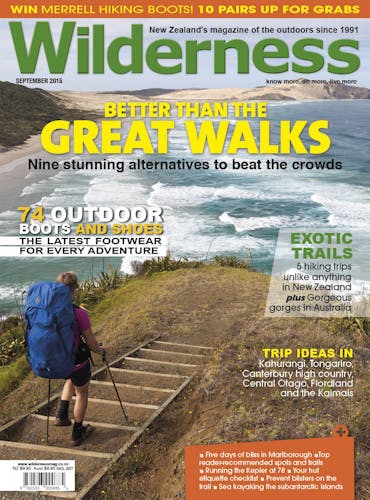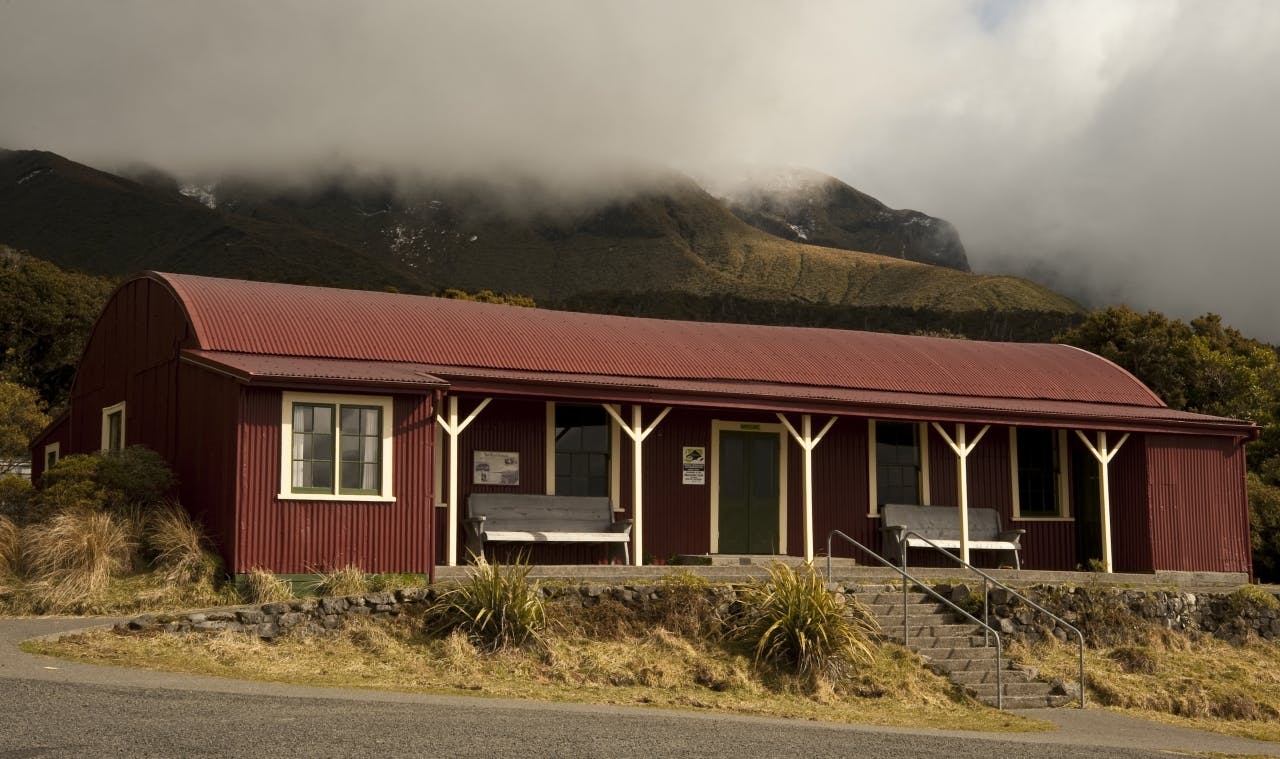A corrugated iron ski hut perched on the flanks of a volcano; a grand hotel modelled on the great ones of the Canadian Rockies; an old army barracks, with gun slits, used in the New Zealand Wars: our oldest national parks certainly feature some interesting buildings, each with a story behind them.
Early development at our first national park, Tongariro, centred on the eastern side of the park, where tourists could access the area as part of a grand tour that approached the central volcanic plateau by way of the Whanganui River and by coach across the Rangipo Desert to Tokaanu. Soon after it was established in 1901, the Department of Tourism and Health Resorts constructed two huts, one at Ketetahi and the other at Waihohonu. It was only after the main trunk railway reached National Park in 1908 that development shifted to Whakapapa Village on the western side of the park. Three historic buildings in the park reflect this heritage.
1. Old Waihohonu Hut, Tongariro National Park
Built in 1903-04, this is the oldest remaining hut in any of the country’s national parks and a rare surviving example of an early hut built for tourism. With two rooms, it served as a base for those tackling trips up nearby Te Heu Heu, or tramping through to Ketetahi. Members of the Ruapehu Ski Club, formed in 1913, used it as base. Although no longer available for accommodation, it’s still an interesting feature to visit when tramping the Tongariro Northern Circuit
2. Glacier Hut, Tongariro National Park
The historic Glacier Hut is just 20min walk from the Whakapapa ski field car park. Painted bright red, the corrugated iron hut looks distinctly different from the flash ski lodges nearby. Bill Salt and a Ruapehu Ski Club team built the six-bunk hut in 1923, long before the road had reached so high. Although enlarged in 1946, its usefulness as accommodation was overtaken by the mass of large ski lodges built during the 1950s and 1960s. Restored by the Ruapehu Ski Club in 1989, Glacier Hut is now a museum full of skiing memorabilia.
3. The Chateau Tongariro, Tongariro National Park
Entrepreneur Rodolph Wigley, famous for his tourism ventures at Mt Cook, was in an expansive frame of mind when he planned to build a grand hotel at Tongariro National Park. His idea was a scaled-down version of the famous hotels built at Banff and Lake Louise in the Canadian Rockies. The elegant Chateau Tongariro was completed in 1929, but Wigley fell on hard times almost immediately due to a downturn during the 1930s Great Depression. Bought by the Tourism Department in 1931, the Chateau had a brief revival in the late 1930s, when skiing first became popular in New Zealand, before the outbreak of the Second World War saw it temporarily used as a hospital. During the 1990s, when Ruapehu erupted, pictures of the Chateau, tiny beneath billowing ash clouds, became world-famous.
4. The Camphouse (1891), Egmont National Park
The Camphouse has the distinction of being the oldest building of any in New Zealand’s national parks. The building was originally corrugated iron barracks, imported from Melbourne in 1855 and erected in New Plymouth to house military troops. In 1891, part of the barracks were shifted by sledge to its present site on the flanks of Mt Taranaki, where it has provided accommodation ever since. With several rooms, and capacity for 32, The Camphouse makes a good venue for a group get-together or special event, and can be booked through DOC.








